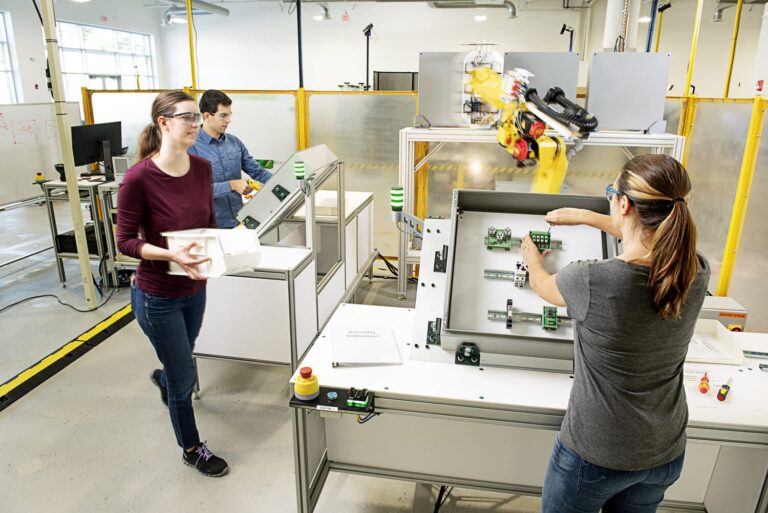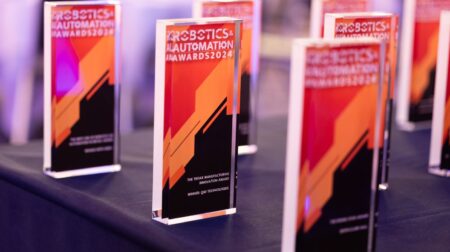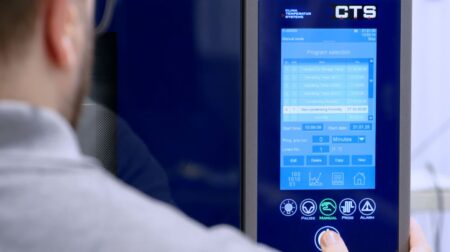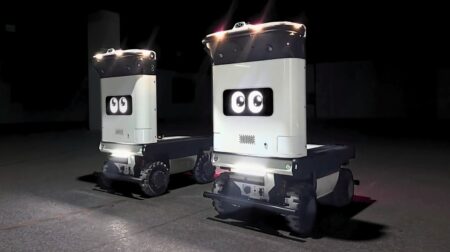Startup company Veo Robotics has announced the launch of a production-ready vision system for safe human-robot interaction.
Veo FreeMove has been designed to give manufacturing engineers the freedom to combine the strength, precision, and speed of standard industrial robots with the ingenuity, judgment, and dexterity of humans.
The system can be used with standard industrial robots from major manufacturers, which can have payloads of hundreds of kilograms and move at many metres per second.
Patrick Sobalvarro, co-founder and CEO, Veo Robotics, said: “FreeMove will make manufacturing more flexible and efficient by reducing both capital and operating expenses.
“It allows manufacturing engineers to build production workcells that include robots, or other automatic machinery, and human production workers. This leads to shorter design times, less custom machinery, and shorter lead times before workcells are operational.
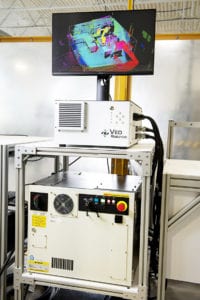
“In production operations, FreeMove provides shorter takt times, higher unit production rates, and quicker fault recovery, all with improved ergonomics and safety. Safe, fluid human-machine interaction is the future of manufacturing.”
Veo FreeMove is compliant with ISO 13849 (safety of machinery – safety-related parts of control systems), meets the requirements of PL=d, structure category 3, and consists of: custom, 3D time-of-flight sensors mounted on the workcell periphery to cover the volume of the safeguarded space; a high-performance, dual-channel architecture computing engine that runs fail-safe software that processes image data from the sensors and implements speed and separation monitoring (per ISO 15066); and a software suite for self-service configuration and real-time visualisation of the sensors and data.
The sensors and engine run the company’s proprietary intelligent vision and control software. Data from the sensors, which have redundant sensing elements with an on-board FPGA for real-time comparison and health monitoring, is fused into a 3D representation of the workcell.
That data is redundantly processed by each channel of the engine’s high-performance computing platform and then compared by a safety processor to guarantee correct calculation.
The engine maps and classifies the workspace in real time, performing dynamic speed and separation monitoring in accordance with ISO/TS 15066 and ISO 10218. The system can be configured through the user interface.
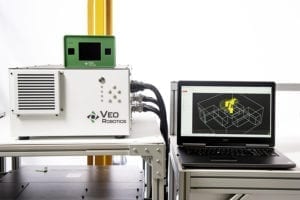
Veo FreeMove also projects all possible future positions of the objects in its environment. It dynamically calculates protective separation distances and signals the robot to slow or stop as necessary for worker safety, and then to resume its programme when it can do so safely.
As Veo FreeMove will override the robot programme as necessary to safely slow and stop, it allows for the design of ISO 10218 SSM-compliant applications and workcells. Additionally, because the sensors and engine have continuous registration and health monitoring systems, any fault will safely stop the robot.
Veo Robotics has been working with third party certification agencies through the system’s development process and will submit Veo FreeMove for certification in early 2020, with final certification expected at the end of 2020.

